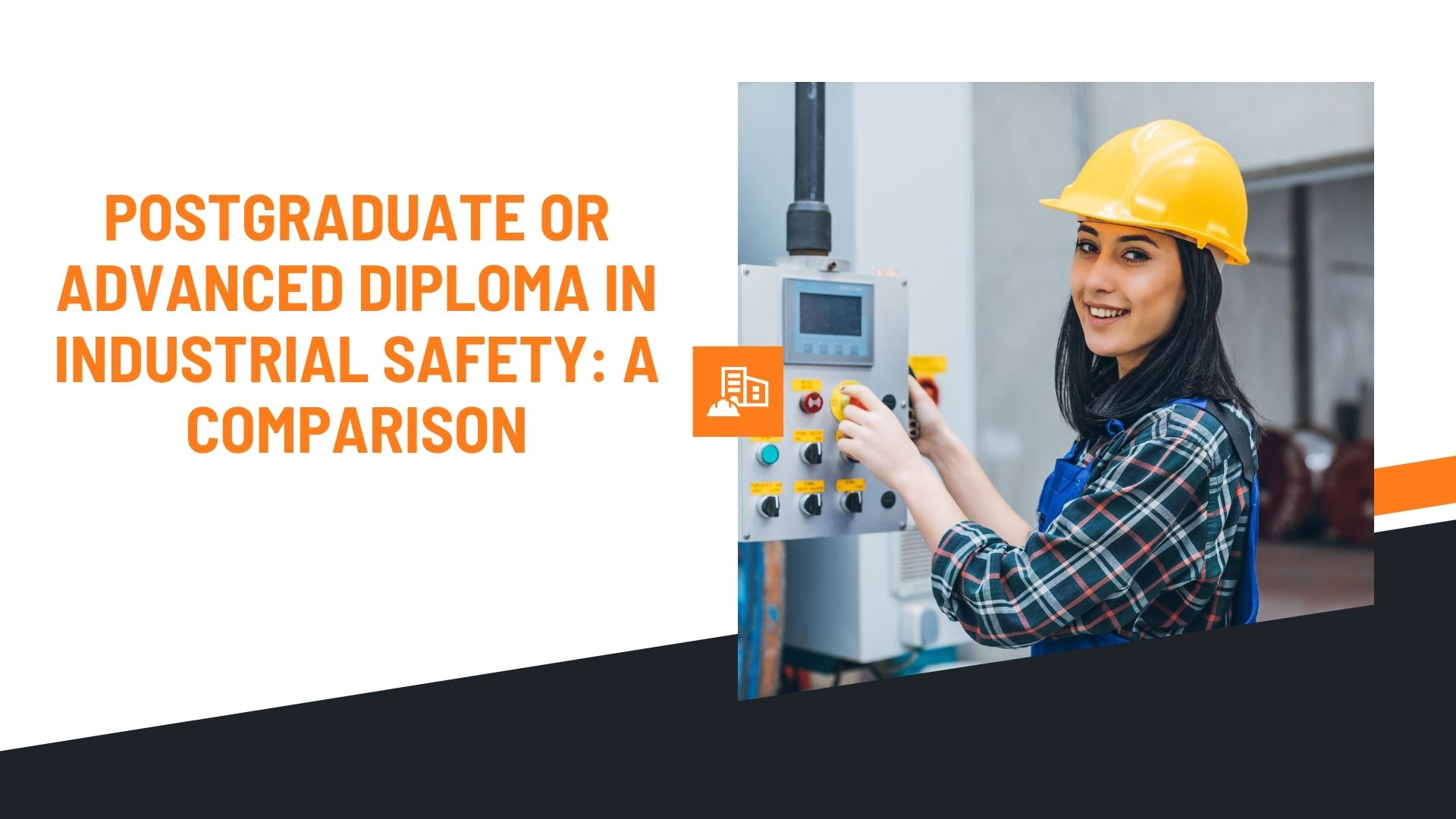In today’s rapidly industrializing world, safety has become an essential aspect of every organization. Whether it’s a manufacturing unit, an oil and gas plant, a construction site, or a pharmaceutical industry, ensuring the health and safety of employees and infrastructure is a top priority. As a result, professionals with specialized knowledge in industrial safety are in high demand. Two popular educational qualifications catering to this demand are the Postgraduate Diploma in Industrial Safety (PGDIS) and the Advanced Diploma in Industrial Safety (ADIS).
While both courses aim to equip individuals with safety management skills and regulatory compliance knowledge, they differ in structure, scope, eligibility, and career prospects. This article offers a detailed comparison of the Postgraduate Diploma and Advanced Diploma in Industrial Safety to help you make an informed choice.
1. Understanding the Basics
Postgraduate Diploma in Industrial Safety (PGDIS)
The PGDIS is a comprehensive program generally offered by recognized universities, technical boards, and autonomous institutions. It is typically considered equivalent to a postgraduate qualification and emphasizes advanced theoretical knowledge along with practical applications in safety engineering, risk management, and industrial health.
Advanced Diploma in Industrial Safety (ADIS)
The ADIS, on the other hand, is an advanced-level diploma course designed to provide foundational and practical knowledge in the field of industrial safety. It is usually offered by state technical education boards and private institutes and is recognized by many industries for its practical orientation.
2. Eligibility Criteria
PGDIS
-
Bachelor’s degree in Engineering/Technology or Science (preferably with Physics or Chemistry).
-
Some institutes may require work experience in the relevant field.
-
Duration: Usually 1 year (full-time/part-time).
ADIS
-
Minimum eligibility is a diploma in engineering or a B.Sc. in science disciplines.
-
Many institutes also accept working professionals with relevant industrial experience.
-
Duration: Typically 1 year.
Key Difference: PGDIS usually demands a more advanced educational background, often a degree, whereas ADIS is accessible to diploma holders and science graduates.
3. Curriculum and Focus Areas
PGDIS Curriculum Includes:
-
Safety in Engineering Industries
-
Environmental Safety and Management
-
Industrial Hygiene and Occupational Health
-
Risk Assessment and Hazard Analysis
-
Fire Engineering and Explosion Control
-
Safety Audit and Inspection
-
Legal and Regulatory Aspects of Safety
ADIS Curriculum Includes:
-
Industrial Hazards and Control Measures
-
Occupational Health and First Aid
-
Safety in Construction and Manufacturing
-
Fire Prevention and Control
-
Safety Laws and Standards
-
Safety Management Systems
-
Accident Investigation and Reporting
Key Difference: PGDIS tends to have a deeper theoretical foundation and covers broader topics including environmental management, while ADIS is more application-based, focusing on real-world industrial scenarios.
4. Recognition and Accreditation
PGDIS
-
Usually affiliated with universities or national technical education bodies.
-
Often recognized by statutory organizations like AICTE, UGC, or equivalent bodies.
-
More suitable for candidates planning to pursue further academic or research-based opportunities.
ADIS
-
Often approved by state technical education boards such as the State Board of Technical Education and Training (SBTET).
-
Widely recognized by industries, especially in sectors like oil & gas, construction, and manufacturing.
Key Difference: PGDIS has broader academic recognition and is more valued in government and higher academic positions, while ADIS is more tailored for quick employment in industries.
5. Career Opportunities
PGDIS Careers:
-
HSE (Health, Safety & Environment) Manager
-
Safety Consultant
-
Safety Auditor
-
Risk Management Specialist
-
Safety Policy Advisor
-
Opportunities in international organizations, MNCs, government departments
ADIS Careers:
-
Safety Officer
-
Fire Safety Supervisor
-
Industrial Safety Inspector
-
Site Safety Coordinator
-
EHS Technician
-
Entry to mid-level roles in industries with scope for growth through experience
Key Difference: PGDIS opens doors to managerial and strategic roles, while ADIS helps in securing operational and supervisory roles in safety.
6. Salary Expectations
-
PGDIS graduates generally earn higher initial salaries ranging from ₹5–10 LPA depending on the industry and prior experience.
-
ADIS holders usually start at ₹2.5–6 LPA, with rapid growth as they gain hands-on experience and additional certifications.
Note: Actual salaries depend on factors like the candidate’s background, the employer, industry, and geographical location.
7. Suitability Based on Career Goals
Choose PGDIS if you:
-
Aspire for a managerial or consultancy role.
-
Have a graduate-level education in science or engineering.
-
Are planning for long-term growth in the HSE domain.
-
Intend to pursue further studies (like M.Tech, PhD, or certifications abroad).
Choose ADIS if you:
-
Want to enter the safety profession quickly after my diploma or B.Sc.
-
Prefer practical, hands-on learning.
-
Plan to work in industries such as construction, oil & gas, manufacturing, and logistics.
-
Aim for a cost-effective and quick-return qualification.
8. Global Opportunities
-
PGDIS is more suitable if you’re planning to work abroad, especially in Gulf countries, Europe, or Southeast Asia, where advanced qualifications are often required.
-
ADIS is also accepted internationally, especially in Middle East countries, but may need to be supplemented with other certifications like NEBOSH, IOSH, or OSHA.
9. Further Certifications and Education
After PGDIS, professionals often pursue:
-
NEBOSH International Diploma
-
Certified Safety Professional (CSP)
-
Master’s in Occupational Health & Safety
After ADIS, professionals often pursue:
-
NEBOSH IGC
-
IOSH Managing Safely
-
ISO 45001 Lead Auditor
Note: For career growth visit best Institute of Fire Engineering and Safety Management
Conclusion
Both the Postgraduate Diploma and the Advanced Diploma in Industrial Safety serve important roles in preparing professionals for the evolving landscape of workplace safety. The right choice between the two depends on your academic background, career goals, budget, and preferred learning approach.
If you are looking for an academically enriched, long-term career path in safety leadership or consultancy, the PGDIS is ideal. However, if you prefer practical exposure, faster employment opportunities, and cost-effective training, the ADIS may be the better fit.
Ultimately, both paths can lead to rewarding careers that contribute significantly to workplace safety, environmental protection, and human well-being—key pillars of any responsible organization.





